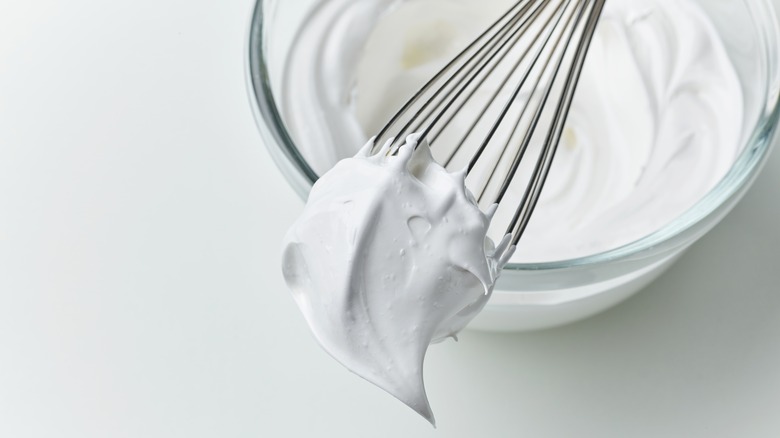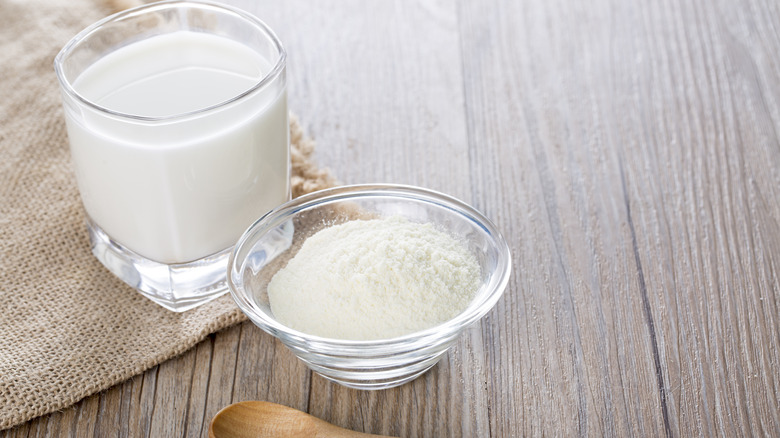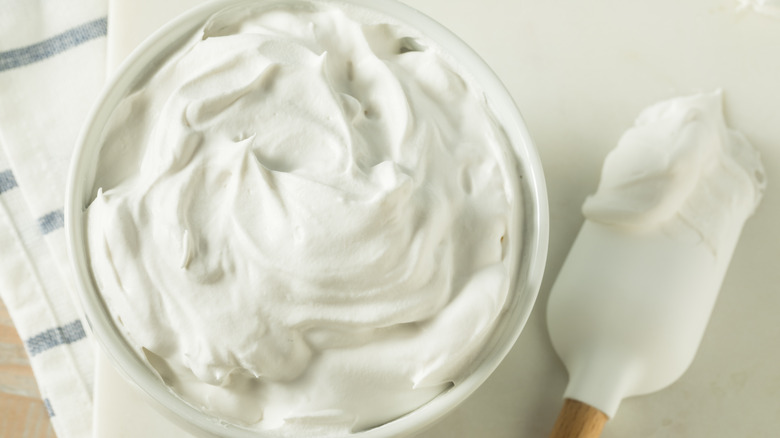Easily Stabilize Your Weeping Whipped Cream With Some Milk Powder
Whipped cream that's fresh out of the mixer always has the best consistency. It's light, fluffy, and holds its shape. But as soon as you put it on something too hot, or even if you just leave it out for too long, it will eventually turn into a puddle of heavy cream. No matter how well you whisk it, whipped cream will always deflate after a while, because fat alone isn't enough to trap the pockets of air that give it its volume. That's why stabilizing ingredients are often added to whipped cream.
One of the most common whipped cream stabilizers is unflavored gelatin, but this can easily make your whipped cream grainy if you're not careful. Cornstarch, cream of tartar, and powdered sugar also work well, however, they can alter the flavor or give your whipped cream a pasty texture. A much more tasty and effective approach is to add milk powder instead.
What happens when you add milk powder to whipped cream?
Most people think of milk powder as simply the dehydrated, shelf-stable dairy product that you can keep in your pantry until you need milk. But while this is in fact true, you don't necessarily have to add water to milk powder in order to use it. It can handily be used as is, to add unexpected flavor to baked goods like cookies and cakes, and it also functions as a whipped cream stabilizer.
Milk powder has all of the protein as regular milk but without the liquid. This protein content is what enables whipped heavy cream to more effectively trap the air you whisk in and ultimately prevent it from escaping. Instead of your whipped cream becoming runny as soon as it gets too warm, it will hold its shape for several days, allowing you to make it in advance or use it to frost a cake on a hot summer day.
How much milk powder should you add to whipped cream?
To stabilize whipped cream, you don't need very much milk powder. Just a tablespoon of the ingredient for every cup of heavy cream will do. This will likely be enough, but if you do decide to add more, don't worry about it changing the flavor like what happens when you add too much powdered sugar or cream of tartar to heavy cream. Because milk powder is a byproduct of milk, it will just give your whipped cream a milky flavor that you probably won't even taste.
When adding milk powder to heavy cream, it's best to add it in right at the beginning along with the vanilla. Whip the mixture as you normally would whip plain cream, and keep going until you get the kinds of stiff peaks that pastry chef Becky Pendola of Virtue Restaurant in Chicago favors for the "Cool Whip" topping on her banana pudding, as detailed by StarChefs. The consistency won't be much different from whipped cream made without milk powder, but there will be a noticeable difference in how well it holds up over time.


